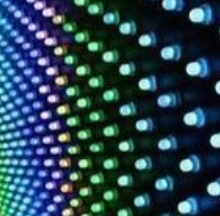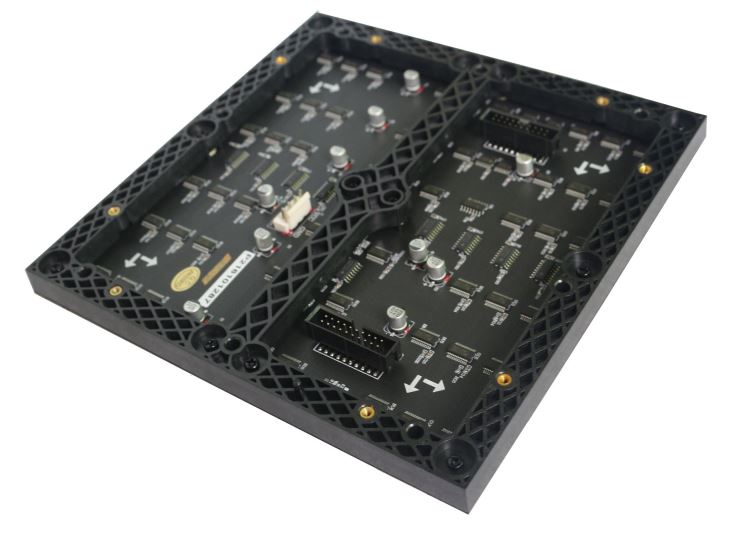 The 2013 China (Shanghai) International Semiconductor Lighting Application Technology Forum was held on July 10 at the New International Expo Center Hall E2-M19. Yang Weiqiao, deputy director of the Shanghai Semiconductor Lighting Engineering Technology Research Center, and the University of California, Santa Barbara School of Engineering Materials Department Prof. Shuji Nakamura, Managing Director of the National Semiconductor Lighting Engineering R&D and Industry Alliance Yu Jun, Gordon RRout LEDge, Chairman of Revo Media Partners, Prof. Tong Tongsheng, Professor of Zhejiang University, and Qian Wenlei, Deputy Manager of Inspection Department of Shanghai Semiconductor Lighting Engineering Technology Research Center Zhang Shanduan, deputy director of the Institute of Electric Light Sources at Fudan University, and Honorary Chairman of the Shanghai Illuminating Society Zhang Hailu attended the forum and delivered keynote speeches.
The 2013 China (Shanghai) International Semiconductor Lighting Application Technology Forum was held on July 10 at the New International Expo Center Hall E2-M19. Yang Weiqiao, deputy director of the Shanghai Semiconductor Lighting Engineering Technology Research Center, and the University of California, Santa Barbara School of Engineering Materials Department Prof. Shuji Nakamura, Managing Director of the National Semiconductor Lighting Engineering R&D and Industry Alliance Yu Jun, Gordon RRout LEDge, Chairman of Revo Media Partners, Prof. Tong Tongsheng, Professor of Zhejiang University, and Qian Wenlei, Deputy Manager of Inspection Department of Shanghai Semiconductor Lighting Engineering Technology Research Center Zhang Shanduan, deputy director of the Institute of Electric Light Sources at Fudan University, and Honorary Chairman of the Shanghai Illuminating Society Zhang Hailu attended the forum and delivered keynote speeches. First, Chen Jie, deputy director of the Shanghai Municipal Science and Technology Commission, and Ding Haitao, chairman of the Shanghai Pudong New Area Association for Science and Technology, gave welcome speeches. Chen Jie pointed out that Shanghai, as the first batch of four semiconductor lighting engineering industrialization bases in China, shoulders the important task of promoting the development of China's semiconductor lighting industry, especially in the development of core equipment such as MOCVD and the National Semiconductor Application System Engineering Research Center. The construction of the platform has achieved a lot of progress. Ding Haitao stated that in 2013 as one of the engines for promoting world economic growth, the lighting industry, especially the LED industry, is in a stage of stable growth with good prospects.
So, what are the LED application areas most concerned about at present? Yang Weiqiao pointed out that because of its large scale and high added value, automobiles, agriculture, and medical care have received more attention. He said that we should treat LEDs as consumer electronics, and its application areas have been expanded with technological advancement, which has led to an increase in industry scale and lower costs, so it has been repeatedly promoted and eventually promoted the development of the industry.
With the acceleration of industrial development, many low-priced and low-quality products have flowed into the market. How to regulate product quality has become a problem that needs to be solved in the LED industry. Yu Jun pointed out that the formulation of standards should be taken as an important means for industrial optimization, and the development of technical standards should be further integrated with scientific and technological innovation to increase the proportion of scientific and technological achievements to form technical standards.
The LED standard with legal effect has not yet been released, and negative news about LED products is not uncommon. Among them, the focus of LED blue light damage is the most enthusiastic. Zhai Tongsheng said that recent test results showed that LED blue light does cause photochemical damage to human eyes, but under normal circumstances this type of damage does not affect the human body, and the key is to choose qualified LED products.
Qian Wenlei said that by analyzing the spectrum of eight different samples, the conclusion is that the blue light component of the warm-color light source is significantly less than the cool-color light source, and as the use time increases, the proportion of the blue light source will increase slightly. However, compared with traditional lighting sources, LED light sources do not have excessive blue light.
Under what circumstances will blue light cause photochemical damage to the retina? Zhang Shanduan pointed out that the blue light has a peak wavelength of 437 nm. When the color temperature is the same, the upper limit of the blue light safety of the LED is similar to the fluorescent light. As long as the surface brightness of light sources and luminaires is <100 kcd per square meter, it is "absolutely" safe to human eyes.
Since the development of lighting applications, from the simple meeting of people's bright needs to providing a comfortable light environment, a qualitative leap has been achieved, and safety lighting has also become a topic that cannot be ignored in the field of lighting. LED as the third revolution of human lighting, security and quality is one of the keys to promote the healthy development of the industry.
At the end of the forum on July 10th, Sun Xinghuai, dean of the Department of Ophthalmology, Eye, Nose and Throat Hospital of Fudan University, Yu Anqi, Deputy Director of the National Electric Light Source Quality Supervision and Inspection Center (Shanghai), and Okano Dunshi, Chairman of Japan Sanyo Resin Co., Ltd. discussed the discussion. dialogue. For the issue of "How to choose the right LED lamp for home purchase," Yu Anqi said that indoor lighting applications may be the best direction for LED lighting in the future. First, when selecting indoor lighting products, products with low surface brightness should be selected as much as possible. Second, try to select LED lighting products with diffuser cover or diffuser plate. In addition, lighting needs to comply with the natural laws of humans, do not use lamps with high color temperatures at night.
Short Description:P2mm Indoor LED Module,256mmx128mm P2mm Indoor LED Panel with 128x64 pixels. Model:ERALED-P2-Indoor-128X64; 5 Years Warranty with NICHIA/CREE/NATIONSTAR/EPISTAR/SILAN gold wires LED lamps,1.6cm thickness PCB,MBI5153 Driving IC ;UL,CE,RoHS,FCC,3C,ISO Approved;
Fine pitch Indoor LED Module
256x128mm,128x64 pixels RGB full color SMD UHD P2mm Indoor Led Display Module |
||
|
Module Specifications |
||
|
1 |
Pixel Pitch |
2mm |
|
2 |
Pixel Configuration |
SMD3in1 |
|
3 |
Module Resolution |
128x64 pixels |
|
4 |
Module Pixles |
25,000 pixels |
|
5 |
Module Size |
256x128mm |
|
Specifications |
||
|
1 |
Screen Brightness |
≥1000cd/m2 |
|
2 |
Driving Method |
1/32 scan |
|
3 |
Mini Viewing Distance |
2m |
|
4 |
Max. Power Consumption |
750W/m2 |
|
5 |
Average Power Consumption |
320W/m2 |
|
6 |
Gray Level |
14bits input, 4096 levels(212) |
|
7 |
Display Color |
16M |
|
8 |
Frame Frequency |
≥60Hz |
|
9 |
Refresh Frequency |
≥1920Hz |
|
10 |
Uninterrupted Working Hours |
≥72 hours |
|
11 |
Screen Life-span |
≥100,000 hours |
|
12 |
MTBF |
≥5,000 hours |
|
13 |
Discrete Blind Spot Rate |
<1/10000 |
|
14 |
Continuous Blind Spot Rate |
None |
|
15 |
Blind Spot Rate |
<1/10000 |
|
16 |
Screen Plainness |
<±1mm |
|
17 |
Power Supply Mode |
AC220±10% 50Hz/AC110±10% 60Hz |
|
18 |
Environment Temperature & Humidity |
Temperature:-20 Celsius~+60 Celsius |
|
19 |
Control Mode |
Synchronous display with control PC by DVI |
|
20 |
Control System |
DVI video card + full color control card + fiber system( optional) |
|
21 |
Display Content |
Video, DVD, VCD, TV, picture, cartoon, graphics, texts.etc. |
|
22 |
Interface |
Standard Ethernet |
|
23 |
Transmission Distance |
Multi mode fiber <500m, single mode fiber <30km,internet cable <100m |

Fine pitch Indoor Led Module
High Power Led Module,Soft Flexible Led Display Screen,Pitch Led Display Screen,Curved Led Display Screen
Shenzhen Joy LED Display Co., Ltd. , https://www.joe-led.com